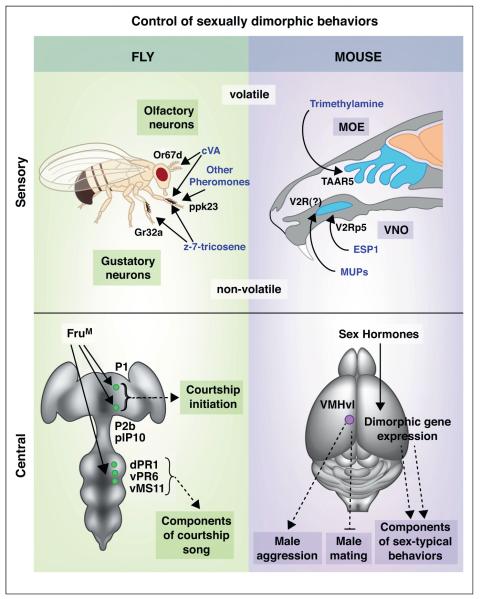Figure 1.
Sensory and central control of sexually dimorphic behaviors. Both flies and mice respond to pheromones that trigger or inhibit particular behaviors. In fruit flies, pheromones are sensed by olfactory neurons as well as by gustatory neurons. In mice, volatile pheromones are sensed by the main olfactory epithelium (MOE) and non-volatile pheromones by the vomeronasal organ (VNO). In fruit flies, various components of male courtship are controlled by specific populations of FruM neurons. Activation of P1, P2b, or pIP10 neurons elicits the initiation of courtship behavior, while FruM ventral nerve cord neurons (dPR1, vPR6, vMS11) control specific elements of courtship song. In mice, gonadal sex hormones control the sexually dimorphic expression of many genes which regulate specific components of sex-typical behaviors. The VMHvl appears to contain neurons that inhibit male mating and activate male aggression. All neuronal clusters shown are bilateral but are depicted on one side for clarity.

